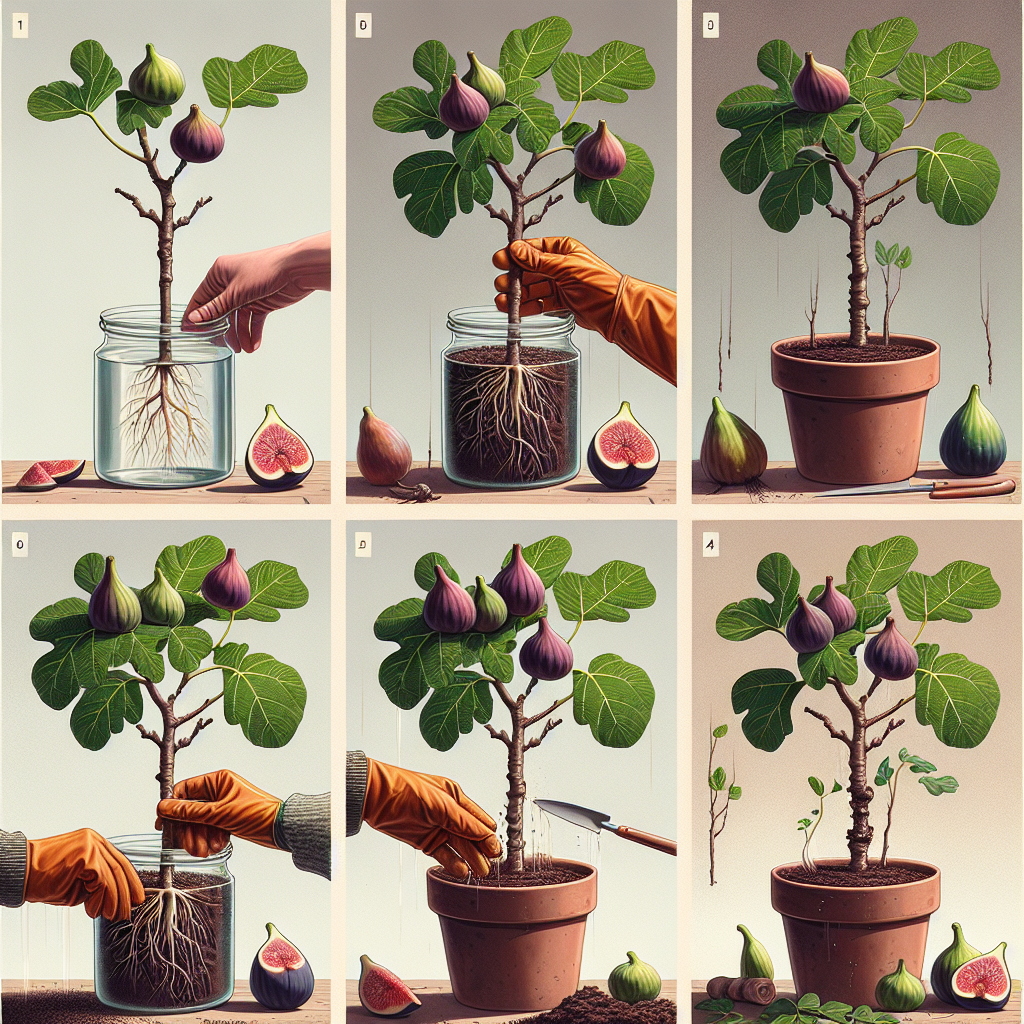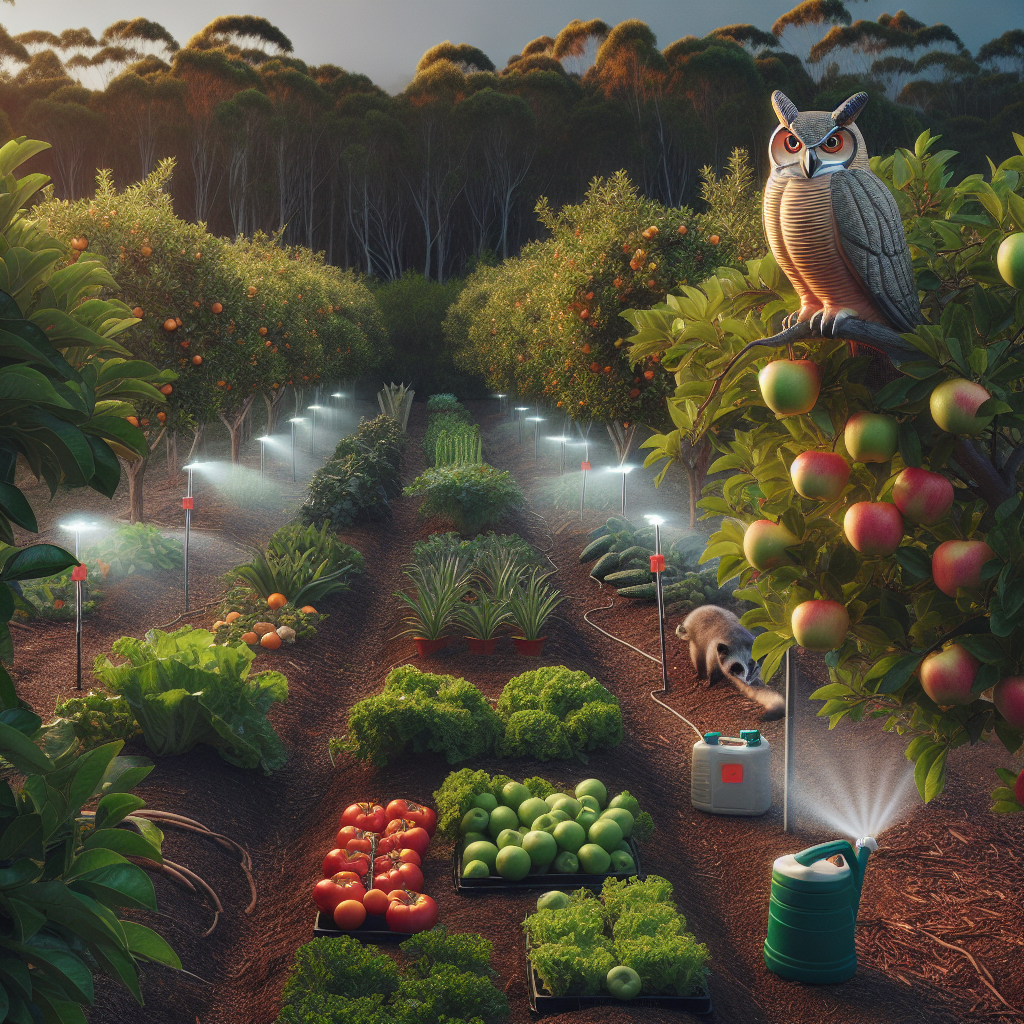Natural Ways to Prevent Blossom Drop in Peppers
Updated April 24, 2024 at 6:57 am
Discover natural strategies to maintain a healthy pepper garden as we explore effective techniques to prevent the frustrating occurrence of blossom drop, ensuring your plants produce a bountiful harvest.

“`html
- Pet Friendly: Not relevant; peppers are typically grown outdoors or in a controlled indoor environment.
- Light Requirements: Full sun is essential for healthy growth and fruit production in pepper plants.
- Watering: Regular watering is necessary, but peppers do not like waterlogged soil – balance is key.
- Humidity: Moderate humidity levels can help prevent blossom drop but avoid overly humid conditions.
- Temperature: Warm temperatures are ideal, with most pepper plants thriving between 70 and 85°F (21-29°C).
- Difficulty: Moderately challenging due to their specific environmental needs to prevent issues like blossom drop.
Understanding Blossom Drop in Peppers
Pepper plants are popular among gardeners for their vibrant colors and the kick they add to cuisine. However, they can be temperamental, especially when it comes to blossoms – the precursors to fruit. Blossom drop, where flowers fall before fruiting, can be disheartening and affect your harvest. It’s like your plant is almost making it to the finish line but then stumbles in the final stretch.
So, why does this happen? Typically, it’s an environmental stress signal. Your pepper plants might be telling you that something isn’t quite right with their growing conditions. Whether it’s temperature fluctuations, inadequate pollination, imbalances in moisture, or even nutrient deficiencies, there are several boxes to tick to ensure your peppers flourish.
Optimal Growing Conditions to Prevent Blossom Drop
Before deep-diving into products and remedies, let’s talk about the foundation – the right conditions for your pepper plants to thrive. A conducive environment is the first natural step towards preventing blossom drop. Peppers love the sun, so ensure they’re planted in a spot that receives full sunlight for most of the day. This means at least 6 to 8 hours of direct sun.
Consistent Watering Without Overdoing It
Watering is a balancing act. Too little, and you’ll stress the plants, potentially leading to blossom drop. Too much, and roots might rot, which also leads to blossom drop. What you’re aiming for is soil that’s consistently moist but never soggy. A good rule of thumb is to water deeply once the top inch of soil feels dry to the touch.
Maintaining Temperatures
Peppers are a bit like the Goldilocks of the vegetable garden – the temperature needs to be just right. Extreme cold or heat will lead to blossom drop. If the temperature is expected to dip below 60°F (15°C) or rise above 90°F (32°C), you might need to take action to protect your plants. During heatwaves, shade cloth can mitigate stress; during cold snaps, a row cover or frost blanket can keep your peppers warm.
Ensuring Proper Pollination
One often overlooked cause of blossom drop is inadequate pollination. If your plants’ flowers aren’t being visited by bees or other pollinators, they won’t bear fruit and may drop. You can gently shake the plants to distribute pollen or hand-pollinate using a small paintbrush. Additionally, driving pollinators to your garden is a natural way to aid this process. Planting pollinator-friendly plants nearby ensures your vegetable garden attracts these helpful creatures.
Balanced Fertilization
Peppers need a balanced diet. Over or under-fertilization can lead to a host of issues, including blossom drop. A slow-release, balanced fertilizer is a good start. You want to look for something with a N-P-K ratio that’s even, such as a 10-10-10, applied according to package instructions. This ensures your plants get a steady supply of nutrients without peaks and troughs that stress them out.
Natural Ways to Tackle Stress-Inducing Pests
Peppers attract certain pests – aphids, thrips, and spider mites, to name a few. These sap-sucking insects can stress your plants and contribute to blossom drop. Introducing beneficial insects like ladybugs, which prey on aphids, can be a natural and effective method to keep pest populations in check. Organic neem oil sprays can also deter pests without the harsh side effects associated with synthetic pesticides.
Calcium Supplements to Strengthen Cell Walls
A calcium deficiency can weaken the structure of the plant, including blossoms. Calcium supplements like garden lime or bone meal can help bolster your plant’s resilience. When considering products, Espoma’s Garden Lime is a popular choice because it’s easy to apply and organic. Based on customer reviews, people appreciate that it offers a natural way to correct soil pH and provide the necessary calcium to reduce blossom drop in pepper plants.
Find This and More on Amazon
Plant Varieties That Resist Blossom Drop
You can also consider selecting pepper varieties that are less prone to dropping blossoms. Some are bred to be resilient to environmental stresses, and starting with robust genetics can provide a solid foundation for your gardening success. Ask your local nursery for recommendations on varieties suited to your regional climate and soil conditions.
Preventing Overcrowding
Pepper plants need sufficient space. Overcrowding can restrict airflow and light penetration, increasing the likelihood of blossom drop. Follow spacing instructions on seed packets or plant labels. Generally, leaving about 18-24 inches between plants is a good guideline to ensure each pepper has room to breathe and soak up ample sunlight.
“““html
Mulching to Regulate Moisture and Temperature
Mulching around your pepper plants is an excellent way to maintain even soil moisture and temperature, which is essential for preventing blossom drop. Organic mulches, such as straw or shredded bark, not only retain moisture but also add nutrients as they decompose. Additionally, mulch can prevent overheating by insulating the soil against extreme heat.
Be cautious not to pile mulch directly against the stems of the plants to avoid potential rot. It’s about finding that sweet spot where your pepper plants have the perfect blanket to keep their feet warm but not too hot!
Regular Monitoring and Adjusting Care Accordingly
Regularly check on your pepper plants to spot any early signs of stress that could lead to blossom drop. Yellowing leaves, wilting, or stunted growth are often indicators that something is amiss. Make adjustments to your care routine as needed, whether it’s tweaking your watering schedule, providing some shade, or adjusting fertilization.
Like any good relationship, communication with your plants through observation can prevent small issues from turning into big problems – like blossom drop.
Pruning for Better Air Circulation and Sun Exposure
Proper pruning can improve air circulation and ensure that each flower gets enough light—both key to preventing blossom drop. By selectively removing some leaves and branches, you’re also reducing the potential for diseases and creating an environment where blossoms are more likely to set fruit.
But remember, with pruning, less is often more. You don’t want to stress the plant by over-pruning, so just focus on removing leaves that are damaged or shading flowers from the sun.
Using Plant Supports to Enhance Stability
Pepper plants bearing heavy fruit loads may become top-heavy and sway in the wind, which could stress the plants and cause blossoms to drop. Using stakes, cages, or trellises can provide the additional support your pepper plants need, allowing them to channel their energy into flower and fruit production instead of fighting gravity.
The added support can also help improve airflow around the plants and make maintenance tasks like harvesting and pruning easier for you, the gardener.
Companion Planting to Improve Overall Plant Health
Companion planting involves growing certain plants together that can mutually benefit one another. For example, planting marigolds nearby can deter nematodes which can stress pepper plants. Attracting beneficial insects can not only help with pollination but also keep pest populations in check.
Other good companions for peppers include basil, which is thought to repel thrips, and onions, which deter a range of pests. By considering these natural relationships, you can create a healthier, more balanced garden ecosystem.
Celebrating the Successful Prevention of Blossom Drop
When you’ve put in the effort to provide the right conditions, manage pests naturally, maintain proper nutrients, and ensure your pepper plants are happy, you should expect to see less blossom drop and more robust fruiting. Isn’t it fulfilling to walk through your garden and see those firm, glossy peppers waiting to be plucked?
Remember, gardening is as much about the journey as it is about the harvest. Every step you take to prevent blossom drop helps you become a more attentive and skilled gardener. So here’s to your success in growing peppers that are not only stunning to look at but also delicious in your meals!
Monitoring and Adapting to Your Microclimate
It’s important to understand that each garden has its own microclimate. What works for a friend a few miles away might not work for you. Keep a keen eye on how your plants respond to weather patterns, the intensity of sunlight, and other unique characteristics of your garden.
Adjust your gardening practices based on what you observe. Perhaps your yard is a wind tunnel, or a portion gets shade during a crucial part of the day. Being adaptive will go a long way in mitigating blossom drop and getting the most out of your plants.
Addressing Soil Health for Resilient Plants
Soil health is paramount in growing any plant, and peppers are no exception. Begin by ensuring your garden bed has well-draining, fertile soil. This might mean amending with compost or a soil conditioner if your ground isn’t quite up to par.
If you suspect a lack of nutrients is causing blossom drop, soil testing can be incredibly helpful. It can guide you on what amendments your soil may need and prevent missteps in fertilization that could harm your plants.
Embracing Patience and Persistence
Lastly, patience and persistence are key. Sometimes, despite our best efforts, we encounter blossom drop. Don’t be discouraged – sometimes it takes a season or two to dial in the perfect balance for your plants.
Each growing season is an opportunity to learn and improve. By consistently applying these natural prevention strategies, observing your plants, and being willing to adapt, you’re on the path to less blossom drop and more bountiful pepper harvests.
“““html
Exploring the Benefits of Epsom Salt in Pepper Plant Care
While not a catch-all remedy, Epsom salt, which is made up of magnesium sulfate, is praised by gardeners for its ability to provide essential nutrients. Magnesium is vital for plant growth and helps with the uptake of other nutrients. An Epsom salt solution used as a foliar spray or soil additive could offer your pepper plants an additional boost to prevent blossom drop.
However, before adding Epsom salt, ensure your plants actually need it. The best way to do this is through soil testing. If your soil test indicates a magnesium deficiency, Epsom salt could be beneficial. As with any supplement, it’s vital to follow proper application guidelines to avoid causing more harm than good.
Understanding the Role of Potassium in Pepper Plant Health
Potassium is another crucial nutrient that supports several plant functions, including the production and transport of sugars, water uptake, and enzyme activation. A potassium deficiency can result in weak plant growth and increased susceptibility to disease, which can contribute to blossom drop.
Organic potassium sources like sulfate of potash are naturally derived and can provide a slow release of nutrients to promote pepper plant health while being gentle on the environment. Remember, over-application of any fertilizer can cause imbalances leading to blossom drop, so adhere to the recommended dosages.
Investing in Quality Potting Mix for Containers
For those growing peppers in containers, the right potting mix is essential. A quality potting mix, which often includes peat moss, perlite, and compost, provides the ideal balance of aeration, moisture retention, and nutrients. FoxFarm's Ocean Forest Potting Soil is a well-regarded product that already contains the necessary nutrients, minimizing the need for additional fertilization.
The positive reviews for this product often mention healthier plant growth and reduced instances of issues like blossom drop. While it may be an investment compared to regular garden soil, its tailored composition could be the difference between struggling plants and a successful pepper harvest.
Find This and More on Amazon
Strengthening Plant Growth With Mycorrhizae
Introducing mycorrhizae, fungi that form symbiotic relationships with plant roots, can also help with nutrient and water uptake, enhancing the overall health of your pepper plants. Products like Myco Bliss Organic Mycorrhizal Fungi boast an impressive species variety that colonizes plant roots and extends their reach, which can significantly improve plant resilience and reduce the risk of blossom drop.
Based on enthusiastic reviews, gardeners have observed that plants treated with mycorrhizal fungi are more robust, encounter fewer nutrient deficiencies, and thus, are less likely to suffer from blossom drop.
The Power of Organic Mulches in Regulating External Stress
Earlier we mentioned mulching as a natural way to maintain soil conditions, but it’s also worth noting the type of mulch used can make a significant difference. Organic mulches not only conserve moisture and regulate temperature but also break down over time, enriching the soil with nutrients. Materials like cocoa hulls and pine straw have the added benefit of being aesthetically pleasing.
Remember to keep a gap between the mulch and the base of the plant to ensure proper air circulation and prevent any potential rot or fungal diseases that could encourage blossom drop.
Avoiding Chemical Stressors
In our quest for bountiful harvests, it’s tempting to reach for quick chemical solutions for pests or plant growth. However, synthetic fertilizers and pesticides can sometimes do more harm than good, leading to chemical stress that may trigger blossom drop. Exploring organic alternatives and integrated pest management strategies can reduce the risk of chemical stress on your pepper plants.
For example, using a natural soil amendment like compost can slowly release nutrients into the soil, making for a more balanced growing environment than synthetic fertilizers often provide.
Embrace the Lessons That Come With Each Growing Season
Even the most experienced gardeners face challenges like blossom drop. It’s part of the process. Reflecting on what worked and what didn’t will make you a more knowledgeable grower. Was your watering inconsistent? Did the mulch work as intended? Don’t be afraid to ask these questions and adjust your methods accordingly.
Learning from each season’s unique trials and triumphs will only refine your gardening skills. Keeping a garden journal can be invaluable for tracking what you’ve tried, what’s worked, and planning for the following season.
Seeking Support From Fellow Gardeners
Sometimes, the best aid in our gardening journey comes from the shared experiences of others. Local gardening groups or online communities can offer a wealth of knowledge and first-hand tips for dealing with specific issues like blossom drop in peppers.
Engaging with fellow enthusiasts can provide fresh perspectives that might help you find exactly what your garden needs to thrive. These interactions can sometimes be as enriching as the soil in which your peppers grow.
Summary and Takeaways for a Bountiful Pepper Harvest
Preventing blossom drop in peppers doesn’t have a one-size-fits-all solution. It requires a multifaceted approach, tuning into your plants’ needs, and sometimes a bit of trial and error. By providing optimal growing conditions, including the right balance of nutrients, water, temperature, and care, you’re setting the stage for a successful harvest.
Embrace organic practices, be patient, and remember that each little step you take can lead to healthier plants and more peppers in your garden. Here’s to your gardening adventures and the delicious rewards that await!
“`
Shop more on Amazon
Flowers & Plants Team
Flowers & Plants Team


